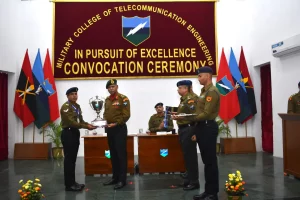- Chinese military is fast increasing its troops in areas around Pangong Tso lake and Galwan Valley along the Line of Actual Control in Ladakh, sending a clear signal that it was not ready to end its confrontation with the Indian Army anytime soon, people familiar with the situation in the disputed region said. The Chinese side has particularly bolstered its presence in the Galwan Valley, erecting around 100 tents in the last two weeks and bringing in machinery for possible construction of bunkers.
- In the midst of the escalating tension, Army Chief Gen MM Naravane paid a quiet visit to the headquarters of 14 Corps in Leh on Friday and reviewed with the top commanders the overall security scenario in the region including in the disputed areas along the LAC, the de-facto border between India and China.
- Military sources said the Indian Army has also been matching up to the Chinese build-up in both Pangong Tso lake and Galwan Valley and that it is in a much advantageous position in certain other sensitive areas in the region.
- The situation in Eastern Ladakh deteriorated after around 250 Chinese and Indian soldiers were engaged in a violent face-off on the evening of May 5 which spilled over to the next day before the two sides agreed to “disengage” following a meeting at the level of local commanders.
- What is the sudden provocation for the latest faceoff between India and China along the Line of Actual Control (LAC)?
- The incidents at Naku La on the Sikkim-Tibet border and the other on Pangong Lake in Ladakh are not unusual. They often erupt when patrols of the two sides encounter each other in zones where there is a difference in perception regarding the alignment of LAC.
- These usually get resolved in accordance with well laid down SOPs observed by both sides.
- The frequency of such incidents has been increasing because significant improvements in border infrastructure on both sides have enabled more regular patrolling of hitherto remote areas.
- The subsequent incident in the Galwan river area in Ladakh is more worrying because our forces have been active in this area, including in undertaking road building, without Chinese objection in the past. Reacting to such activity on our side of the LAC with a build-up of forces and, in effect, expanding its territorial claim, is escalatory behaviour.
- These actions may be in the nature of a warning to India not to join the US-led chorus of condemnation of China’s handling of the Covid-19 virus, refrain from supporting the restoration of observer status to Taiwan in WHO and avoid taking actions against Chinese economic interests such as the recent closing of the automatic route for Chinese investment in India
- How crucial is the road project that goes up to Daulat Beg Oldie (DBG)?
- China would prefer that the glaring asymmetry between the quality of infrastructure on the Indian and Chinese sides is not bridged by India since that reduces China’s dominance of the disputed border. While the asymmetry is still quite significant, India has been making steady improvements through road building in high altitude locations, setting up of new air bases such as at Nyoma in Ladakh and Tezpur in Assam.
- The quality of our high-altitude posts has also been upgraded.
- The Demchok to DBG road is particularly important because it runs parallel to LAC and is linked, at various points, with the major supply bases further inland. We have also upgraded the various advance landing grounds along this stretch, including at DBG, Chushul, Fukche and Demchok.
- The Demchok-DBG road is mostly complete except for a segment which was originally planned over a perma-frost area, but the alignment was later altered.
- It is construction along this new alignment which appears to have been challenged by the Chinese.
- M23 Fighters Capture Uvira, Eastern DR Congo, Prompting Local Cleanup Efforts
- NCOs of Corps of Signals Graduate with Diploma in Information Technology and Telecommunications
- Indian Air Force Commissions 244 Flight Cadets at Combined Graduation Parade
- Current Affairs 13 December 2025
- CDS 1 2026 Notification and Exam Date

















